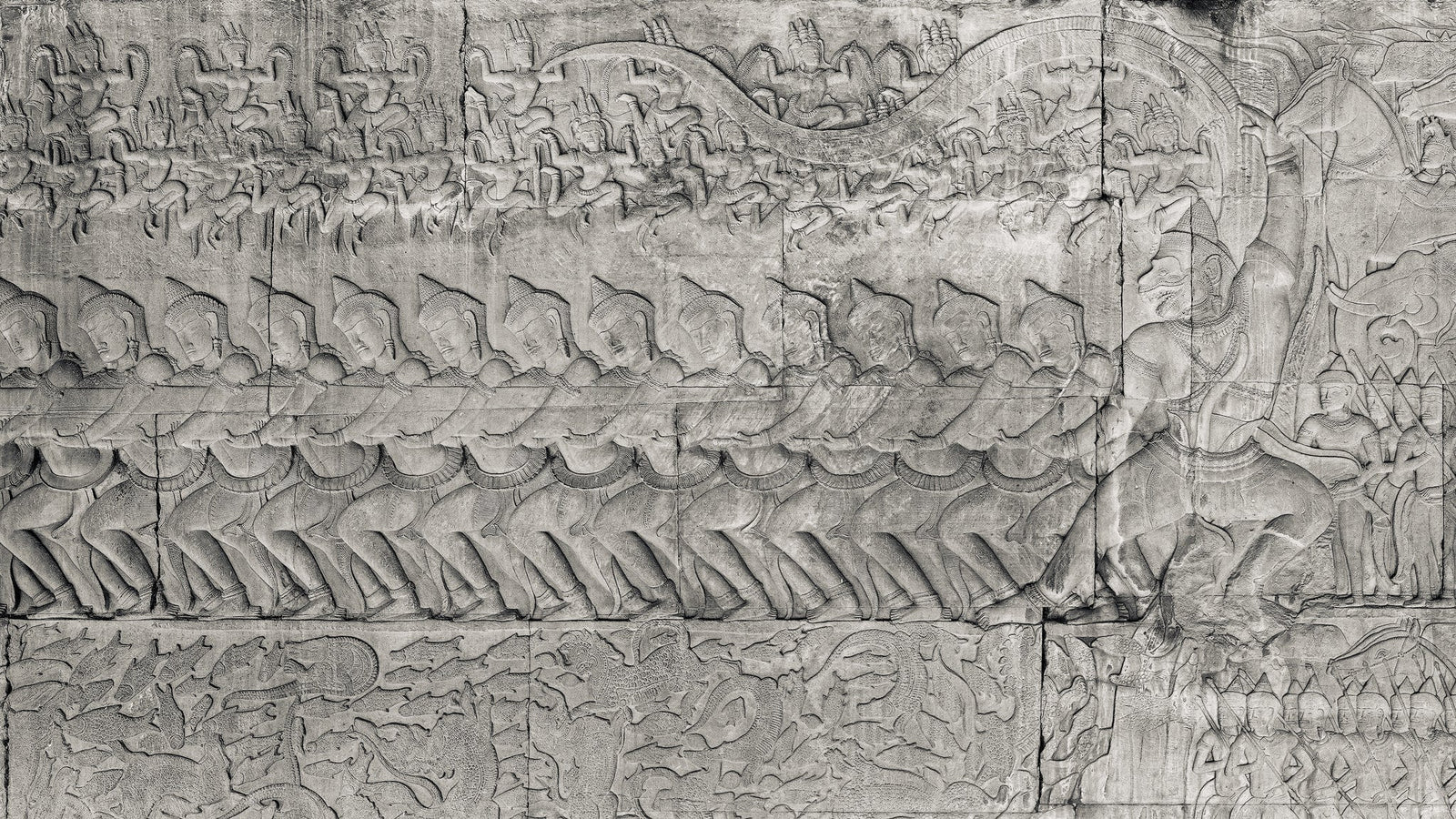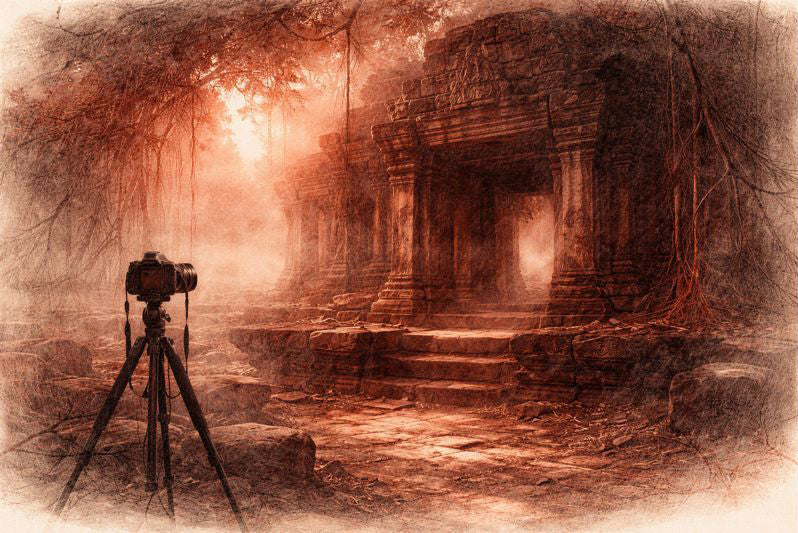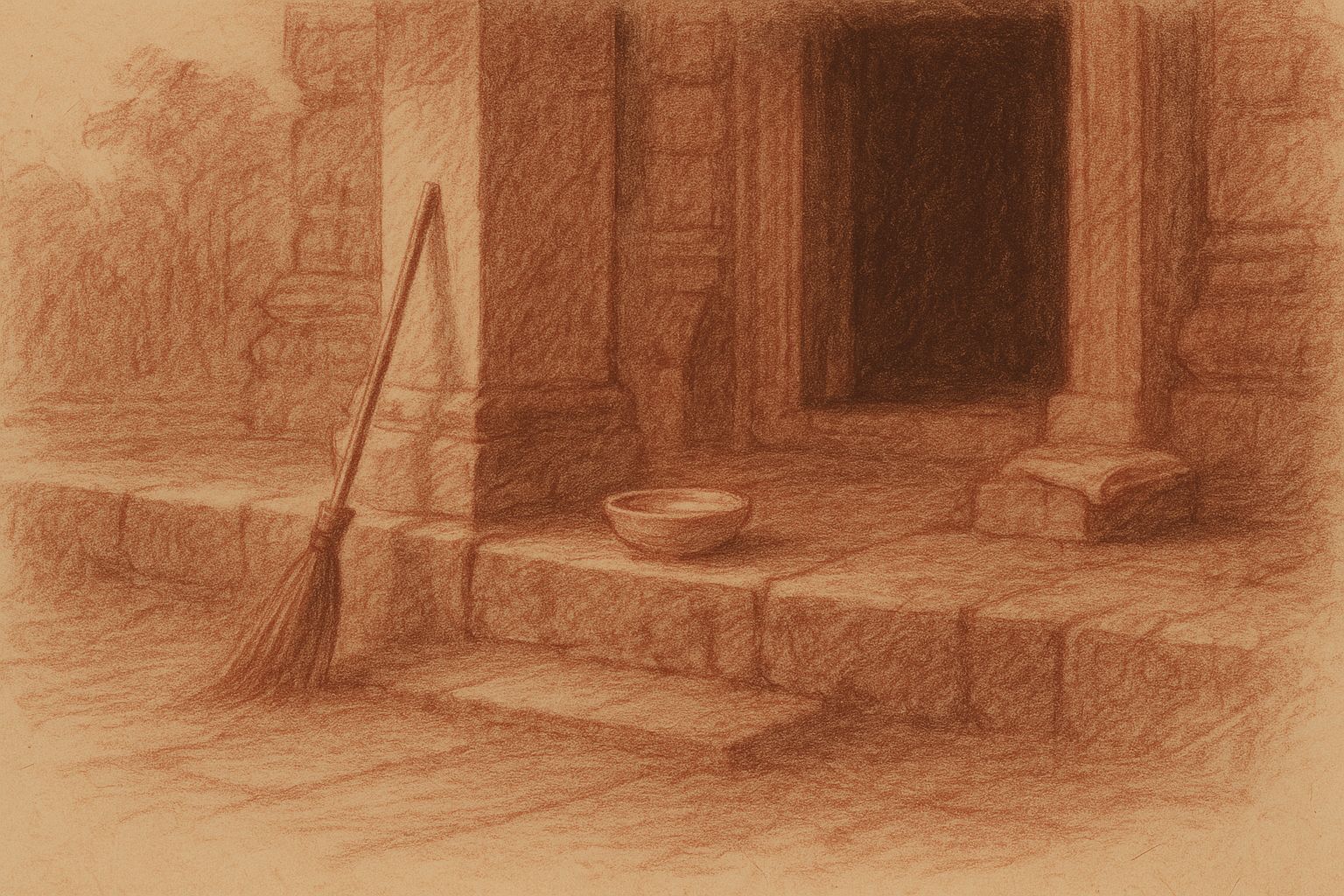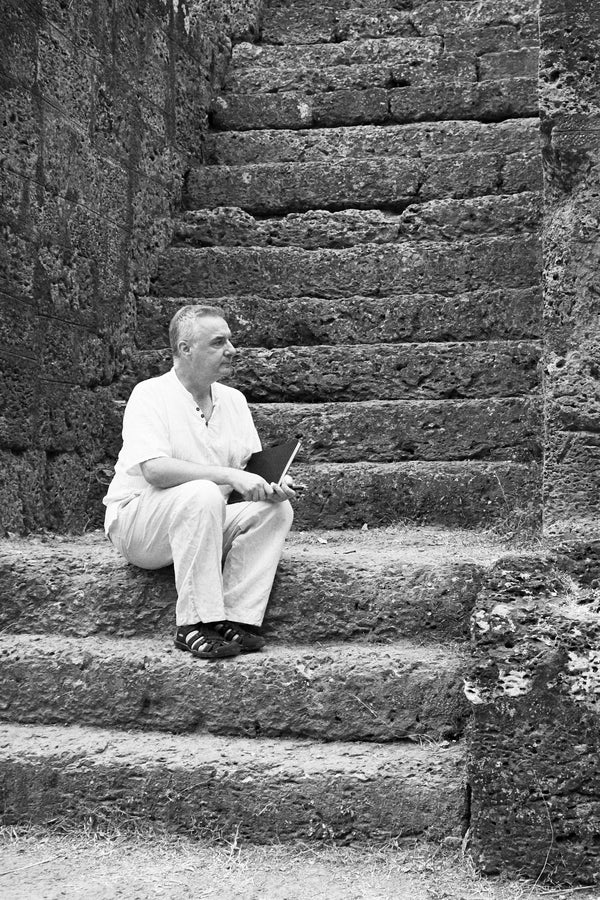Complimentary worldwide shipping on orders over $400 · No import tariffs for most countries
Complimentary worldwide shipping on orders over $400 · No import tariffs for most countries

The Churning of the Ocean of Milk at Angkor Wat Temple, Part IV: The Devas
3 min read
We complete our examination of the Churning the Ocean of Milk relief at Angkor Wat Temple by continuing to our right along the 48.45 metre panel from the centre, as described in Part III: Vishnu Presides, to examine the northern end of the panel where we see the devas pulling the great naga Vasuki, who acts as the rope around the churning post that we just discussed.
In Khmer reliefs the asuras are depicted to the south, the devas to the north.
The devas are depicted almost identically to the asuras that we saw on the left (southern) side of the panel, the main distinguishing feature being the the devas' conical crowns versus asuras' crested helmets.
The 88 devas are outnumbered by the 92 asuras, and the general pulling movement seems to be in favour of the asuras. This imbalance between the two factions seems to indicate that the asuras are on the verge of gaining possession of the amrita, threatening to worsen the universal crisis already in place.
Just like the asuras, the devas led by three heroic figures, at the front, middle and end.

Figure 1. Vibhishana Churning the Ocean of Milk, Angkor Wat Temple, Cambodia
You can see a larger version of this image by clicking here. ⧉
In Figure 1 we see the first of the deva leaders in the front, closest to Vishnu. Unusually, he has the the fangs and typical hairstyle of the rakshasas, as depicted in the relief of the Battle of Lanka on the opposite side of the 3rd enclosure galleries here at Angkor Wat, indicating that this relief was strongly influenced by the Ramayana. This suggests that he could be Vibhishana, renegade brother of Ravana and ally to Rama.
The attendance of Vibhishana at the Churning is not mentioned in the Puranic text, but his inclusion was perhaps popular at the time the relief was carved in the local version of the Ramayana.
Coedès preferred to interpret this figure as either Shiva or Rahu, and Mannikka also suggests that this is Rahu, the demon who infiltrated the devas's ranks to drink some of the amrita.
Notice again, at the bottom of the panel, a register depicting marine life, including nagas and reachisey (a sort of dragon with four short legs), being tossed around by the Churning, with those creatures closest to the churning vortex being chopped to pieces. And again, along the top of the panel, a register teeming with the newly created apsaras in graceful flight.

Figure 2. Brahma Churning the Ocean of Milk, Angkor Wat Temple, Cambodia
You can see a larger version of this image by clicking here. ⧉
The middle deva lord, seen in Figure 2 with five faces, is probably Brahma, though Le Bonheur believed it might be Shiva with an unusual headdress.
Mannikka, on the basis of the type and amount of sunrays the personages receive during the winter and summer solstices, proposed that this deva leader is one of the many forms taken by Vishnu to assist in the Churning, in this case his 'deva form'.

Figure 3. Sugriva Churning the Ocean of Milk, Angkor Wat Temple, Cambodia
You can see a larger version of this image by clicking here. ⧉
In Figure 3 we see the last of leaders on the deva's side, holding the tail of Vasuki as anchor for his team. He is a mighty crowned monkey, and not a god, probably representing either Sugriva or Hanuman, but seems more likely to be Sugriva since this depiction has the same physical features of the powerful monkey fighting Valin in the relief of the latter’s murder in the southwestern corner pavilion here at Angkor Wat.
Once again we see the influence of the local version of the Ramayana, as the attendance of Sugriva or Hanuman at the Churning is not mentioned in the Puranic text.

Figure 4. Deva Reserves, Churning of the Ocean of Milk, Angkor Wat Temple, Cambodia
You can see a larger version of this image by clicking here. ⧉
And finally, behind Sugriva, on the far right of the panel, are the reserve armies of the deva army (Figure 4). As with the asuras, we see infantry/cavalry in front of their horses on the lower register, and more infantry in front of horse-drawn chariots and elephants bearing howdahs on the upper pseudo-registers. Mannikka suggested that these represent a crowd of Khmer onlookers who would have gathered at the coronation (Indrabhisheka) of the king, to watch the enactment of the scene of the Churning.
If you enjoyed this article, and you would like to learn more about the other marvelous carvings in Angkor, please sign up for my newsletter below.
Also in Library

Before the Shutter Falls
3 min read
Before the shutter falls, fear sharpens and doubt measures the cost of waiting. In the quiet hours before dawn, the act of not-yet-beginning becomes a discipline of attention. This essay reflects on patience, restraint, and the quiet mercy that arrives when outcome loosens its hold.

Those Who Keep the Way Open — On the Quiet Guardians of Angkor’s Thresholds
3 min read
Quiet gestures shape the way into Angkor — a swept stone, a refilled bowl, a hand steadying a guardian lion. This essay reflects on the unseen custodians whose daily care keeps the thresholds open, revealing how sacredness endures not through stone alone, but through those who tend its meaning.

Multiplicity and Mercy — The Face Towers of Jayavarman VII
5 min read
A new vision of kingship rises at the Bayon: serene faces turned to every horizon, shaping a world where authority is expressed as care. Moving through the terraces, one enters a field of steady, compassionate presence — a landscape where stone, light, and time teach through quiet attention.
Join My Studio Journal
Receive occasional letters from my studio in Siem Reap—offering a glimpse into my creative process, early access to new fine art prints, field notes from the temples of Angkor, exhibition announcements, and reflections on beauty, impermanence, and the spirit of place.
No noise. No clutter. Just quiet inspiration, delivered gently.
Subscribe and stay connected to the unfolding story.

Join My Studio Journal
Receive occasional letters from my studio in Siem Reap—offering a glimpse into my creative process, early access to new fine art prints, field notes from the temples of Angkor, exhibition announcements, and reflections on beauty, impermanence, and the spirit of place.
No noise. No clutter. Just quiet inspiration, delivered gently.
Subscribe and stay connected to the unfolding story.
